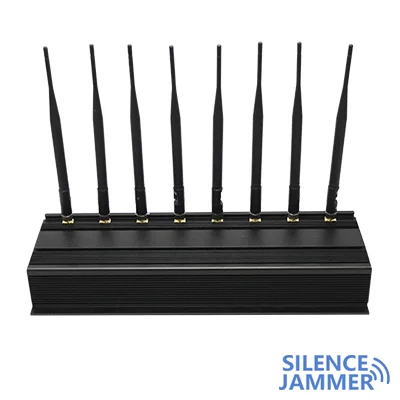As drone technology becomes more widely used, protecting critical areas from drone interference becomes increasingly important. Base station drone signal jammers have emerged as a result. They block drone communication and navigation by emitting powerful interference signals. However, ordinary people can't help but wonder whether these powerful interference devices pose a threat to their health or daily life? This article will explore this issue in detail from multiple perspectives.

Working principle of base station drone jammer
- Control signal frequency bands: 2.4 GHz and 5.8 GHz, these two frequency bands are the communication bands used by most commercial drones.
- GPS signal frequency band: L1 frequency band (1575.42 MHz), which is a commonly used GPS frequency band for drone navigation.
The base station drone jammer interferes with the control signals and navigation signals of the drone by emitting electromagnetic waves. Its main interference frequency bands include:
These devices are usually deployed in military bases, airports, government agencies, important infrastructure and other places that require a high level of security.

potential health effects
- electromagnetic radiation exposure
- safety standard
The radiation intensity and frequency of electromagnetic waves are key factors affecting human health. The electromagnetic waves emitted by base station drone jammers operate in the same frequency band as ordinary communication devices (such as mobile phones and Wi-Fi routers), but their transmission power is usually higher.
Long-term exposure to high-power electromagnetic radiation may have adverse effects on health. However, base station drone jammers are usually used in specific places where the threat from drones is high, and ordinary people are rarely exposed to their radiation range for long periods of time.
Countries have strict safety standards for electromagnetic radiation, and the design and use of base station drone jammers must comply with these standards. As long as the equipment is used within the scope of compliance, its electromagnetic radiation impact on the human body will be controlled within a safe range.
Impact on daily life
- communication signal
- GPS signal
Will the powerful interference capabilities of base station drone jammers affect ordinary people's daily communications and electronic devices?
The design goal of the base station drone jammer is to interfere with the communication signal of the drone, not the mobile phone signal or Wi-Fi signal of ordinary people. However, when the interference signal strength is high, nearby communication equipment may experience certain interference. To avoid this problem, jammers are typically deployed and used away from densely populated areas.
The GPS interference signal of the base station drone jammer may affect the positioning accuracy of nearby devices, such as navigation systems and smartphone positioning services. For this reason, such devices are usually activated under special circumstances and measures are taken to limit their interference range.
Safe use and management
- Restricted use places
- License
- Regular maintenance and testing
In order to ensure the safe use of base station drone jammers, countries usually develop strict usage specifications and management systems:
Base station drone jammers are usually deployed in critical security areas, such as airports, government agencies, military bases, etc. Ordinary people move less frequently in these areas and are therefore less likely to be disturbed.
The use of base station drone jammers requires permission and supervision from relevant departments to ensure that they are activated at specific times and in specific areas, and to notify relevant personnel and institutions when activated to reduce the impact on ordinary people.
Equipment requires regular maintenance and testing to ensure that it operates within the set frequency and power range and avoids excessive interference with the surrounding environment.
Base station drone jammers play a key role in ensuring the security of important areas, but their threats to ordinary people are controllable under the premise of strict management and standardized use. As long as relevant safety standards and usage specifications are followed, the impact of electromagnetic radiation from base station drone jammers on human health and daily communications can be minimized. Therefore, ordinary people do not need to worry too much about these devices, but it is still necessary to maintain reasonable concern and understanding of issues involving personal privacy and security.


